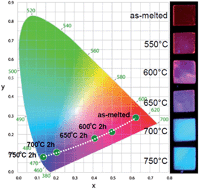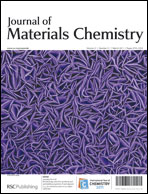We report on tunable photoluminescence from mixed-valence Eu-doped nanocrystalline Li2ZnSiO4 glass ceramics. After preparation of the precursor glass in air, gradual reduction of Eu3+ to Eu2+ occurs intrinsically during thermal annealing and precipitation of crystalline Li2ZnSiO4. Dual-mode photoemission can be generated for exciting at a wavelength of about 360 nm. The resulting colour of luminescence, ranging from orange/red to blue, can be controlled by adjusting the annealing temperature and, hence, the degree of crystallization: with increasing annealing temperature, the ratio of luminescence intensities related to Eu3+ and Eu2+ species, respectively, varies as a result of increasing degree of Eu3+-reduction as well as distinct changes in the optical scattering behaviour of the obtained glass ceramic. At the same time, the bandwidth of Eu2+-related photoemission increases from 87 to 154 nm. The underlying mechanisms of photoemission and energy transfer from Eu2+ to Eu3+ are discussed on the basis of dynamic emission spectroscopy and structural considerations, and a description of the internal reduction process is given.

You have access to this article
 Please wait while we load your content...
Something went wrong. Try again?
Please wait while we load your content...
Something went wrong. Try again?


 Please wait while we load your content...
Please wait while we load your content...